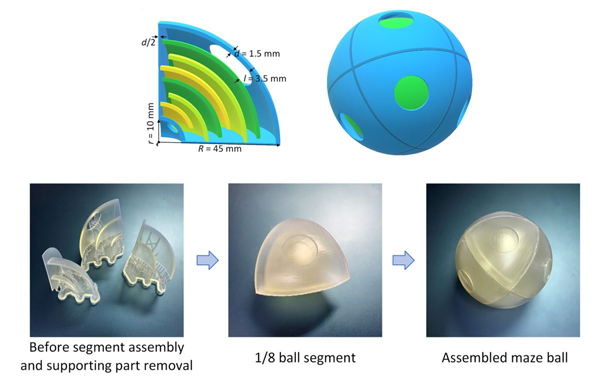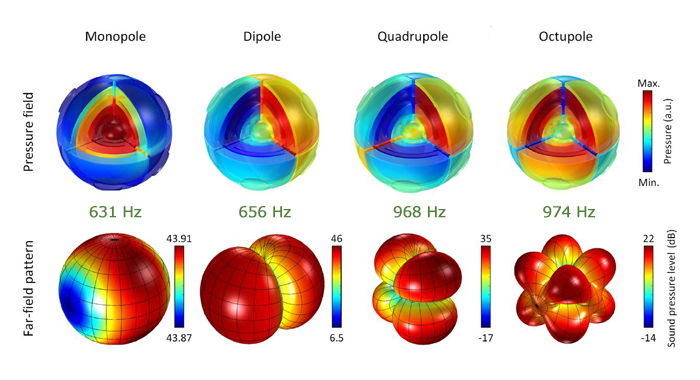
Stopping sound is a subject of great importance, as evidenced by your noisy neighbours.
In a joint China-Japan collaboration, we demonstrate that this is possible using a compact maze ball.
Mazes come in many forms, perhaps most familiarly with bushes arranged in a maze pattern in a garden, usually constructed on a flat surface. But you can also make a three-dimensional maze, which people would find terribly difficult to escape from.
Not only people. Sound also has trouble exiting a maze.
Following on from previous work on icosohedral maze balls, in this study we construct an compact octagonal maze ball, which we place in a tube and use to stop sound. We take advantage of the properties of acoustic metamaterials, materials that can manipulate sound in ways not found in the natural world.

Constructed 90 mm diameter maze ball, made like an onion with many layers.
The figure shows our maze ball, which is 90 mm in diameter, and made by 3D printing and glueing. When we place it in a tube of diameter 200 mm, we find that by tuning the sound to a pitch of 630 Hz we can stop 67% of the sound intensity from travelling in the tube, in spite of the ball filling up only a small fraction of the tube.
Normally such a small ball would vibrate at a much higher frequency, but the maze structure effectively slows the progression of sound from the outside to the inside of the ball, lowering its sound pitch.

Simulations of the first four resonances of the maze ball.
By numerical simulation we have investigated the different possible vibrations of the maze ball, as shown in the above figure.
This research provides an avenue to manipulating and blocking sound with sparsely arranged objects, which allow air to pass but block sound at the same time.
Full details can be found in
'Compact acoustic metamaterial based on the 3D Mie resonance of a maze ball with an octahedral structure,' T. Zhang et al., Appl. Phys. Lett. (2022).